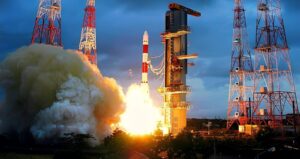ButSpeak.com
News which Matters.

ISRO’s second test flight of air breathing propulsion on the RH-560 rocket at Satish Dhawan Space Centre monitored 110 parameters, marking a significant advancement in space technology.
The Indian Space Research Organisation (ISRO) has successfully executed its second experimental flight to demonstrate air breathing propulsion technology. This significant milestone took place on Monday with the launch of the RH-560 sounding rocket from the Satish Dhawan Space Centre in Sriharikota. The Bengaluru-headquartered national space agency confirmed the successful ignition of the air breathing propulsion systems, which were symmetrically mounted on either side of the rocket.
In a detailed statement, ISRO highlighted that the flight test achieved satisfactory performance of the sounding rocket, and nearly 110 parameters were meticulously monitored during the flight to evaluate its performance. The data collected from this mission will be instrumental in advancing the development of air breathing propulsion systems.
Prior to this mission, ISRO conducted multiple ground tests across various centers, including the Vikram Sarabhai Space Centre, Liquid Propulsion Systems Centre, ISRO Propulsion Complex, and CSIR-National Aerospace Laboratories in Bengaluru. These preparatory tests were crucial in ensuring the successful outcome of the experimental flight.
The RH-560 rocket, a two-stage, solid motor-based sub-orbital rocket, served as the platform for this test. Designed to be a cost-effective flying test bed, the RH-560 is utilized for demonstrating advanced technologies, playing a pivotal role in ISRO’s continuous innovation and development efforts.
ISRO’s commitment to pioneering space technology is evident in this successful test. The air breathing propulsion technology, which involves the use of atmospheric oxygen to burn fuel, has the potential to revolutionize space travel by reducing the amount of oxidizer carried on board, thereby increasing payload capacity and efficiency.
As ISRO continues to push the boundaries of space technology, this successful test flight represents a significant step towards more sustainable and efficient space exploration. The advancements in air breathing propulsion systems promise to enhance the capabilities of future space missions, reinforcing India’s position as a leader in space technology.